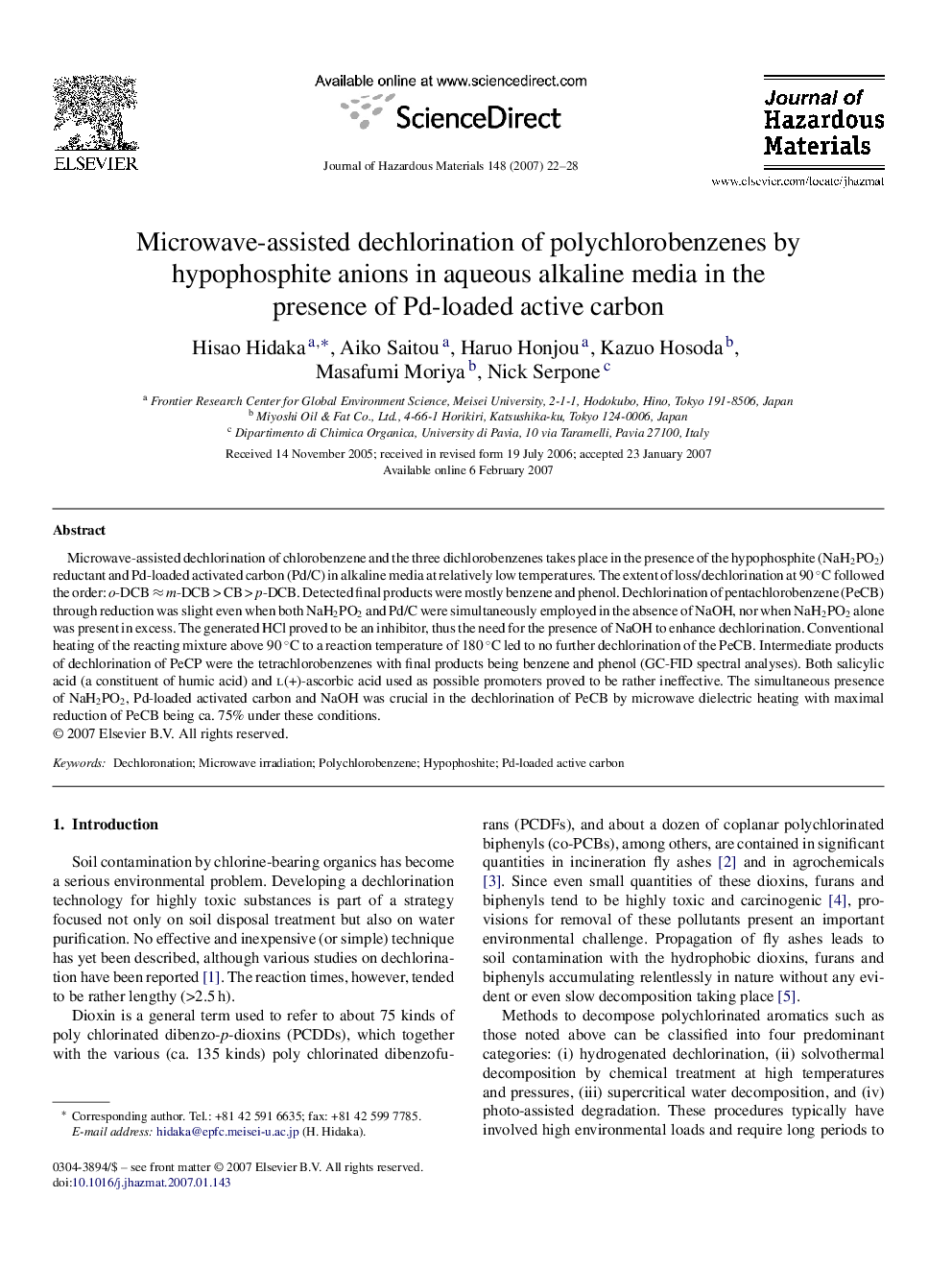| Article ID | Journal | Published Year | Pages | File Type |
|---|---|---|---|---|
| 584371 | Journal of Hazardous Materials | 2007 | 7 Pages |
Abstract
Microwave-assisted dechlorination of chlorobenzene and the three dichlorobenzenes takes place in the presence of the hypophosphite (NaH2PO2) reductant and Pd-loaded activated carbon (Pd/C) in alkaline media at relatively low temperatures. The extent of loss/dechlorination at 90 °C followed the order: o-DCB â m-DCB > CB > p-DCB. Detected final products were mostly benzene and phenol. Dechlorination of pentachlorobenzene (PeCB) through reduction was slight even when both NaH2PO2 and Pd/C were simultaneously employed in the absence of NaOH, nor when NaH2PO2 alone was present in excess. The generated HCl proved to be an inhibitor, thus the need for the presence of NaOH to enhance dechlorination. Conventional heating of the reacting mixture above 90 °C to a reaction temperature of 180 °C led to no further dechlorination of the PeCB. Intermediate products of dechlorination of PeCP were the tetrachlorobenzenes with final products being benzene and phenol (GC-FID spectral analyses). Both salicylic acid (a constituent of humic acid) and l(+)-ascorbic acid used as possible promoters proved to be rather ineffective. The simultaneous presence of NaH2PO2, Pd-loaded activated carbon and NaOH was crucial in the dechlorination of PeCB by microwave dielectric heating with maximal reduction of PeCB being ca. 75% under these conditions.
Keywords
Related Topics
Physical Sciences and Engineering
Chemical Engineering
Chemical Health and Safety
Authors
Hisao Hidaka, Aiko Saitou, Haruo Honjou, Kazuo Hosoda, Masafumi Moriya, Nick Serpone,
